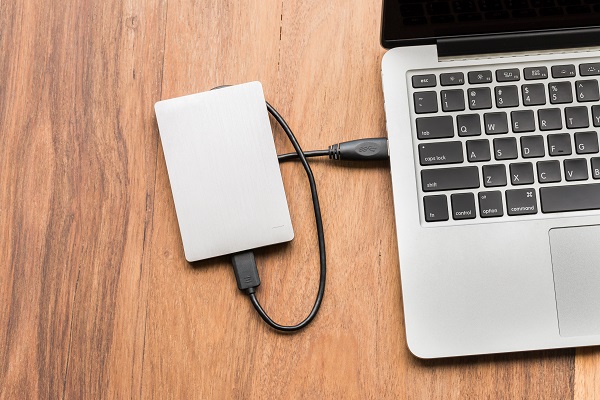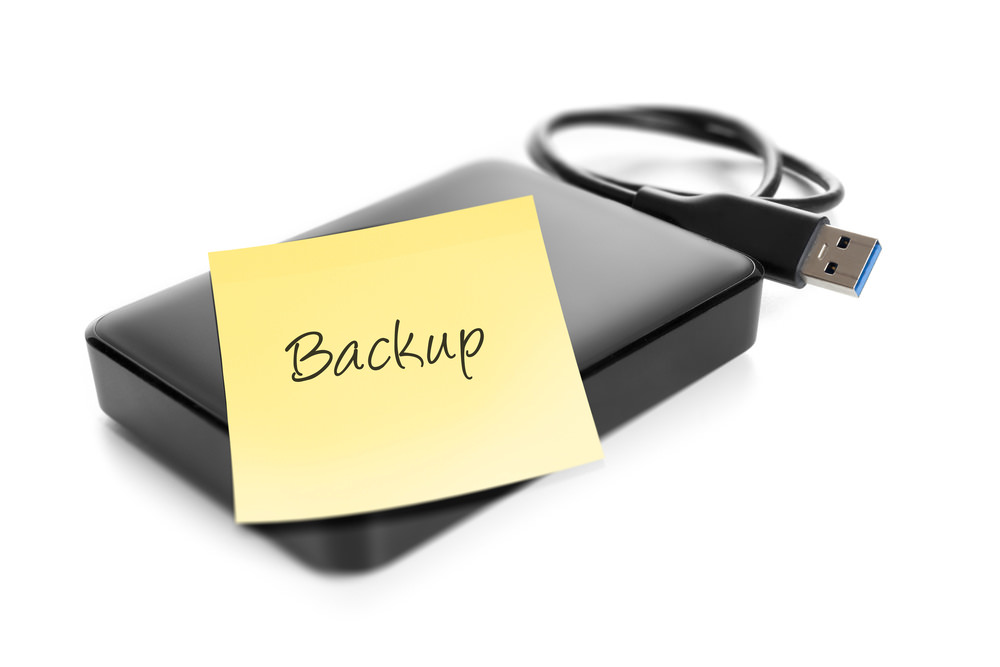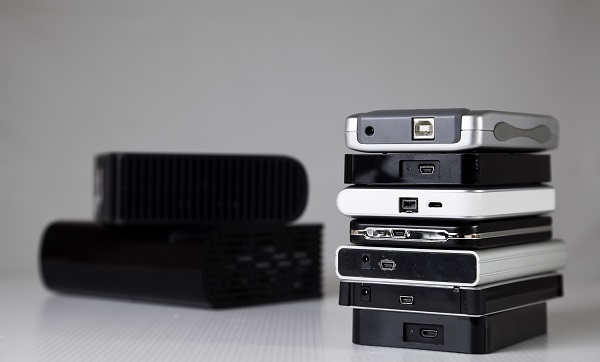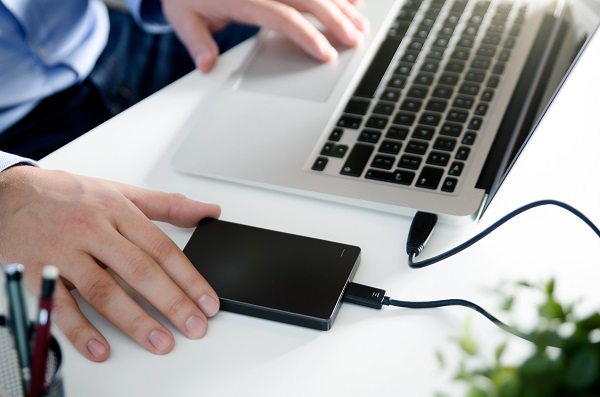This blog was updated in June 2022.
Although the internal storage of a desktop PC or a laptop may be large enough for many users, some of us will inevitably need extra storage space for our computers, especially if you work with large file sizes, like with video editing.
The addition of an external hard drive not only provides you with easy access to a massive amount of storage space, but the portability it can provide means you can work wherever you need to.
But how does a hard drive work? What is a good hard drive capacity? What size hard drive do I need for my work? In this guide, we’ll attempt to answer these questions and determine just how much storage you might need.
How does a hard drive work?
While most of us know what a hard drive does, many of us probably have no idea how they actually work.
Hard drives contain a spinning plate that’s coated in a magnetic material. When data is saved to a hard drive, an arm literally writes it to the disk so that the data can be retrieved at a later time by having the computer ‘read’ the disk.
This system, while slower than more modern solid-state drives, allows a substantial amount of information to be stored in hard disk drives.
What are the different types of external hard drives?
Although this guide is geared towards helping you choose exactly what size external hard drive you need, it’s worth quickly running over the types of HDD available so you know which is best suited for your needs.
There are two main kinds of external hard drives you’ll need to choose between:
Hard Disk Drives (HDD)
HDDs have traditionally dominated the PC storage market, especially once they began to hold more data than writable DVDs. HDDs give you the most storage for your money, though the read/write speed is usually nowhere near as fast as that of the more modern SSD.
Solid State Drives (SSD)
Although technically not a hard drive in the traditional sense, an SSD fulfils the same purpose.
An SSD has no moving parts. Instead, the data is stored in integrated circuits rather than rotating platters, which gives SSDs a greater speed advantage over the comparatively sluggish HDD.
A typical SSD has a file copy/write speed that’s at least double that of most HDDs – up to ten times as fast for the most advanced devices. This speed comes at a price, however, as a typical SSD is much more expensive than an equivalently sized HDD.
Unless you need especially fast access, for example, if you’re working with resource-intensive graphics or audio applications, a HDD is probably the way to go for your external storage.
How do external hard drives connect to my computer?
Nowadays there are a variety of connection options available to users, so before you buy an external HDD, it’s vital that you check what kind of connectivity ports your computer has.
Although the vast majority of HDDs will connect via a form of USB, some drives contain features which you might not be able to take advantage of without the correct peripheral ports on your device.

A USB 3 hard drive will typically work fine when plugged into a USB 2 port, but you’ll be stuck at USB 2 speed. Some devices may also only connect via Firewire or Thunderbolt, though these are few and far between nowadays and you usually get multiple connections leads with your HDD.
Hard drive size and portability
When it comes to hard drive size, you don’t just want to account for internal hard drive capacity, but also its physical size. Physically smaller hard drives will tend to be more expensive, especially at higher storage capacities, but this might be a price worth paying if portability is an important factor in your purchasing decision.
How is external hard drive storage measured?
Hard drive storage is typically measured in gigabytes (GB) or terabytes (TB). These sizes denoted how much storage space your hard drive has, and therefore how much you can actually put on the drive before it’s considered full.
How much storage is 1GB?
A gigabyte (GB) is made up of 1,000 megabytes. In the past, external storage of a couple of gigabytes was usually enough for users’ needs, but with the way file sizes are changing, a couple of gigabytes won’t be nearly enough.
How many GB is 1TB?
For those wondering how many GB are in 1TB, that’s one terabyte, the answer is 1,000 gigabytes. That’s quite the upgrade from a single gigabyte. Naturally, for those wondering how much storage is 2TB, the answer is 2,000 GB, also known as more than enough!
What are the different hard drive capacity sizes?
Hard drives come in a huge range of memory sizes, giving you a great choice when it comes to hard drive capacity.
The smallest external hard drives on the market today tend to hold around 128GB. But the biggest can be as large as 10TB – that’s an almost 10,000 percent difference! Of course, almost every size in between is represented, so you can be sure there’ll be something to suit your needs.
Generally, the most popular hard drive capacities are 1TB or 2TB, so, if you’re undecided, you can’t really go wrong with a 1TB hard drive.
What is the typical size of common file types?
Although a file of any given type can vary wildly in size, here are some typical sizes of various file types that you’ll likely be working with:
- Microsoft Word documents – 0.3MB
- Music files (128 kbps mp3) – 4MB per song
- Music files (320 kbps mp3) – 10MB per song
- Music files (lossless FLAC) – 20MB per song
- 3 megapixel JPEG images – 0.5MB
- 15 megapixel JPEG images – 4.5MB
- 3-megapixel TIF images (uncompressed) – 9.2MB
- 15-megapixel TIF images (uncompressed) – 44.1MB
- Standard Definition, 1hour videos – 280MB
- High Definition, 1hour videos – 440MB
- Standard Definition, 5 minute compressed videos for editing – 1GB
- High Definition, 5 minutes uncompressed videos for editing – 45GB
As you can see, the amount of space you’ll need on your external hard drive will vary massively depending on what kinds of files you need to store on it.
What size hard drive do I need?
When it comes to deciding on hard drive sizes, every case is different, but the list below should give you some idea of the average external hard drive needed, depending on what kinds of files will take up most of your storage:
- Documents – 128-256GB
- Music (compressed) – 256GB
- Music (lossless) – 500GB
- Music (production) – 1TB-4TB
- Photographs/images (casual) – 100GB – 1TB
- Photographs/images (professional/editing) – 1TB+
- Videos (SD/casual) – 1TB-2TB
- Videos (HD) – 2TB-4TB+
- Videos (production/editing) – 4TB+
You probably won’t need much more than the 500GB if you’re mostly storing documents with maybe the odd photo album or wedding video, but your needs will increase if you’re working with larger files, downloading lots of games and movies, or storing lots of large projects for work.
Hard drive capacity sizes and price
Thankfully, storage is relatively cheap these days. Often, at the lower end of the price range, it doesn’t cost that much more to double or even quadruple the storage available.
For a 1TB external hard drive, you’re looking at less than £50. That’s a big drop from just a few years ago when storage was a lot more expensive, so you’re getting some really good value for money.
If you’re undecided between two models of different size, it’s probably a smart idea to choose the larger hard drive. After all, that extra space won’t be doing any harm, and it could come in handy in the long run if your storage needs expand.
Ultimately, if long term storage is what you need, consider a larger but relatively cheaper external HDD. For working professionals or where speed is a priority, an SSD is the way forward.
Now that you know what kind of hard drives exist, and the capacity options they provide, you go straight to browsing all our external hard drives in the Ebuyer store.
For new HDDs to streamlined SSDs, we’ve got all your external storage needs. And naturally, we’ve got internal storage as well. You can view them all right here at Ebuyer, as well as hitting up the Ebuyer blog for more articles like this one.






